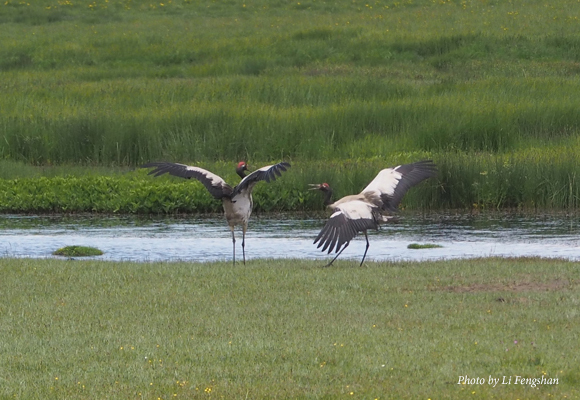
We were quite a big group getting off the early morning plane at the small Hongyuan airport in Sichuan province in southwestern China: George and Spike from Wisconsin, Mary from Alaska, Qian from Beijing, Pankaj from Ladakh, India and Kinley and Jigme from Bhutan. Tom and Kathy Leiden, who so generously supported the trip, were unable to join us at the last minute.
We were all on our way to the 7th Black-necked Crane Network Meeting in nearby Gansu province, but first we had a few days at Ruoergai, the Black-necked Crane capital of China, where the International Crane Foundation has a long-running program focusing on conservation, research and monitoring and environmental education. The education program is supported by International Crane Foundation Board member Heather Henson. She was here, too, and our paths crisscrossed over the next few days.
Two teachers from Cao Hai, an important wintering area for Black-necked Cranes in Guizhou province, arrived to hold a summer camp for schoolchildren at Ruoergai, where the birds breed in high-altitude wetlands. The International Crane Foundation has a long relationship with Cao Hai Nature Reserve, developing a community-based loan program in the 1990s to support conservation actions through the local Farmers’ Association. Two members of the Farmers’ Association also came to Ruoergai. It was quite a collection!
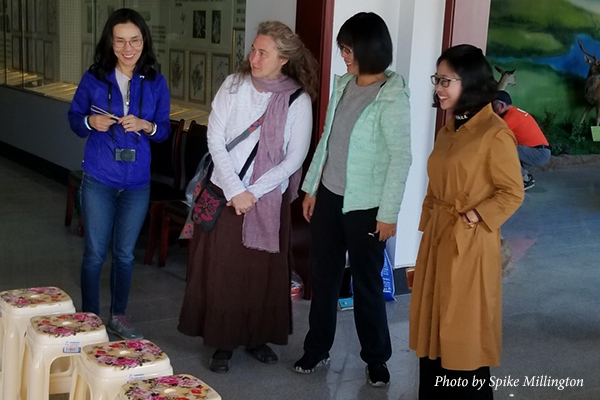
Fengshan met us at Hongyuan and encouraged us to take it easy to get used to the altitude. It was about 10,000 feet above sea level. Taking it easy was not the style of this group, however, and we were soon charging along the rickety boardwalk winding through the nearby wetland. There was a family of cranes, somewhat distant, and delightful Citrine Wagtails, much closer, feeding young birds hidden in the marsh.
We spent the next three days based at the charming Tibet Sunlight hotel in Ruoergai. Maybe because we were staying there, we had plenty of sunlight every day – the weather was perfect, with white clouds in the blue sky reflected in the lakes and wetlands and myriad wildflowers giving colors to the high grasslands. We attended an inspiring summer camp session for kindergarten kids at the nature reserve headquarters, carried out some crane counts around town and visited the new 5 km boardwalk at Flower Lake.
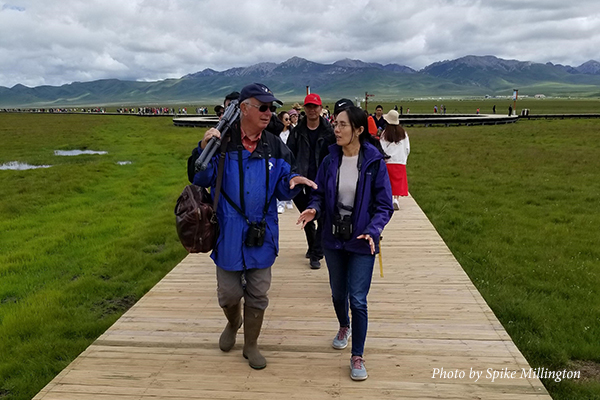
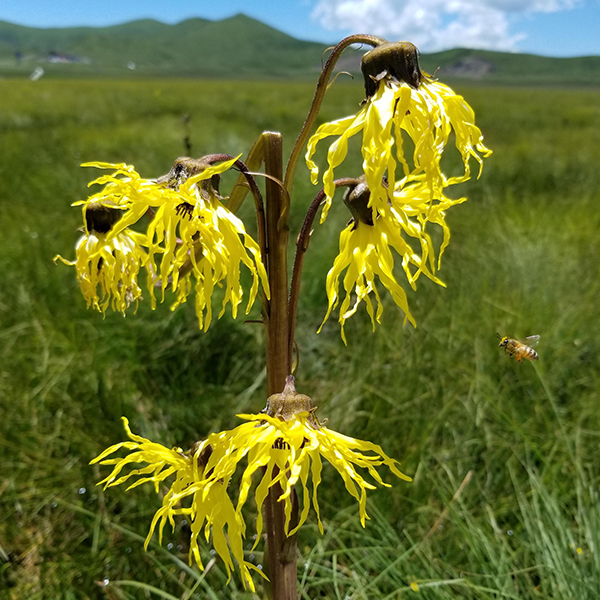
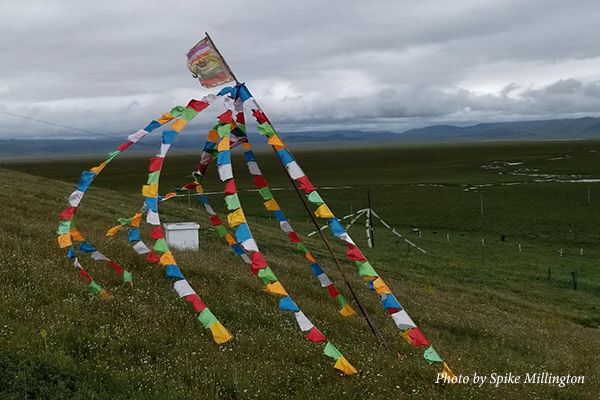
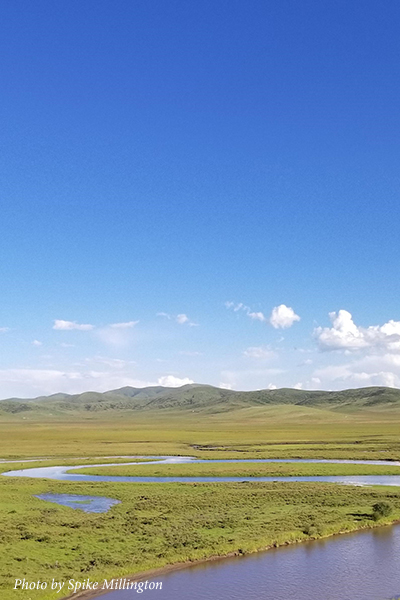
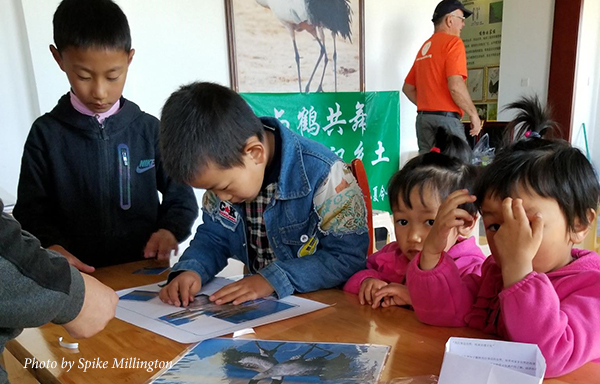
The number of people on the boardwalk was quite staggering, literally hundreds at a time, nearly all tourists, bussed out from the newly-built tourism center. How many noticed the cranes at the edge of the lake I’m not sure, but the nesting Common Terns were screeching over our heads and the Greylag Geese grazed right next to the boardwalk. Everybody seemed very happy with the experience.
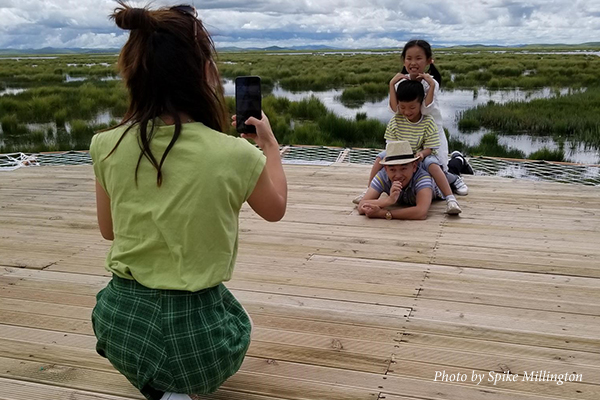
And so on to Gahai, stopping at the lake to see nesting Eared Grebes and Ferruginous Ducks, before arriving at the hotel where the Black-necked Crane Network meeting was held. The Network is quite informal and brings together people with eclectic interests but sharing a love of Black-necked Cranes, from researchers and nature reserve managers to educators and those studying the role of cranes in culture and history. This time, presenters came from all range states: Pankaj and Jigme shared experiences from India and Bhutan, and we heard from breeding and wintering sites in China. George gave a keynote speech on Cranes and Climate Change. Professor Ye Jiansheng from Lanzhou University delivered a fascinating paper about the predicted effects of climate change on the Tibetan Plateau and northeast China, respectively breeding areas for Black-necked, then White-naped and Red-Crowned cranes.
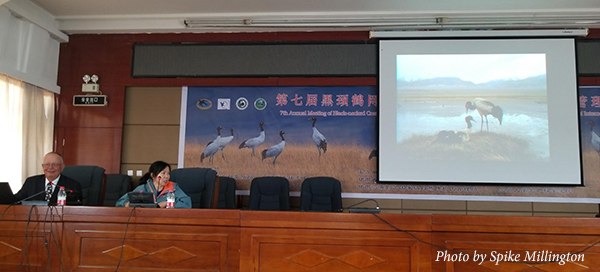
Elevated temperatures are predicted throughout these regions with increased but unpredictable precipitation on the Tibetan Plateau and decreased rainfall to the east. Although the melting of glaciers and increased rainfall will create more wetlands on the Tibetan Plateau, increased evaporation associated with higher temperatures will ultimately result in wetland loss, especially after the glaciers are gone. Things will be much worse for the wetlands of the White-naped and Red-Crowned Cranes, where melting permafrost may accelerate wetland loss.
We heard about the different flyways of Black-necked Cranes, which support varying numbers of birds. Overall though, numbers appear to be increasing – 14,000 now, up from an estimated 11,000 a few years ago, with big increases in the western flyway wintering in the Yarlung Tsangpo valley in Tibet. We heard how cranes are now adapting to upland roosting sites, far from water. We watched fascinating footage of cranes aggressively displacing nesting bar-headed geese on an island in Qinghai, destroying over 150 nests and eating 600 goose eggs! We heard how feral dogs are a significant and increasingly damaging threat to cranes (and indeed people)! There were inspiring talks about the impacts of environmental education activities and the achievements of the Famers’ Associations in Cao Hai. Nature reserve managers shared their successes and challenges in conserving cranes and their habitats in both breeding and wintering areas. All in all, I was struck by the camaraderie among the group, the passion and dedication to saving cranes, from young and old people alike.
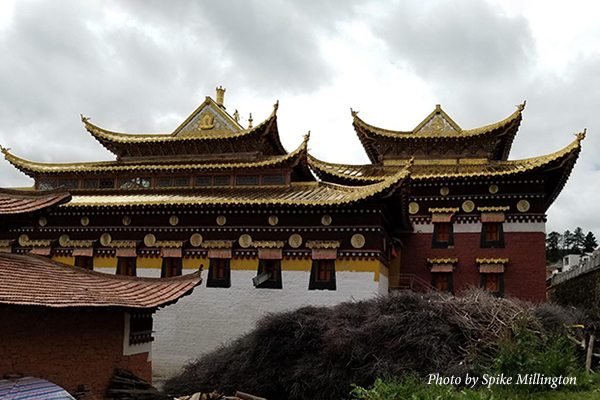
I mentioned how nice the weather was. I confess that at times as I looked out the window of the meeting room, I worried that such good weather could not last. Sure enough, as the field trip day dawned, it was bucketing down with rain and freezing cold. I had neither umbrella nor gloves, and wished I had both! But it cleared up as the day went on, and we watched kestrels and harriers playing in the wind over the hills and visited the impressive Langmu monastery, golden roofs shining in the late afternoon sun. The days had gone by quickly, but we saw so much and learned even more. Fengshan has nurtured this network over the years and great credit goes to him, and the International Crane Foundation, for its continued success.
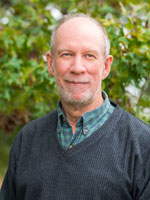 Story submitted by Spike Millington, Vice President International – Asia. Click here to learn more about our work in East Asia.
Story submitted by Spike Millington, Vice President International – Asia. Click here to learn more about our work in East Asia.
